-
 Bitcoin
Bitcoin $105,734.0170
-1.51% -
 Ethereum
Ethereum $2,414.7328
-3.26% -
 Tether USDt
Tether USDt $1.0002
0.00% -
 XRP
XRP $2.1748
-2.62% -
 BNB
BNB $647.5663
-1.72% -
 Solana
Solana $148.1710
-3.81% -
 USDC
USDC $0.9999
-0.01% -
 TRON
TRON $0.2799
-0.02% -
 Dogecoin
Dogecoin $0.1586
-4.17% -
 Cardano
Cardano $0.5440
-5.03% -
 Hyperliquid
Hyperliquid $37.0680
-6.59% -
 Bitcoin Cash
Bitcoin Cash $501.2052
-4.01% -
 Sui
Sui $2.6846
-3.47% -
 Chainlink
Chainlink $12.8488
-3.38% -
 UNUS SED LEO
UNUS SED LEO $8.9480
-1.51% -
 Avalanche
Avalanche $17.2059
-3.87% -
 Stellar
Stellar $0.2270
-4.75% -
 Toncoin
Toncoin $2.7889
-3.93% -
 Shiba Inu
Shiba Inu $0.0...01126
-1.76% -
 Litecoin
Litecoin $83.6893
-3.36% -
 Hedera
Hedera $0.1445
-4.49% -
 Monero
Monero $312.4014
-2.58% -
 Dai
Dai $1.0000
0.00% -
 Ethena USDe
Ethena USDe $1.0001
-0.01% -
 Polkadot
Polkadot $3.2920
-3.32% -
 Bitget Token
Bitget Token $4.4629
-1.81% -
 Uniswap
Uniswap $6.5386
-8.42% -
 Aave
Aave $260.3780
-6.01% -
 Pepe
Pepe $0.0...09308
-4.54% -
 Pi
Pi $0.4864
-3.04%
How to calculate LTC transaction fees? How to choose a low-fee platform?
Litecoin's fast transaction speeds and lower fees make it popular; understanding fee calculation and choosing low-fee platforms optimizes your LTC transactions.
May 04, 2025 at 06:28 am
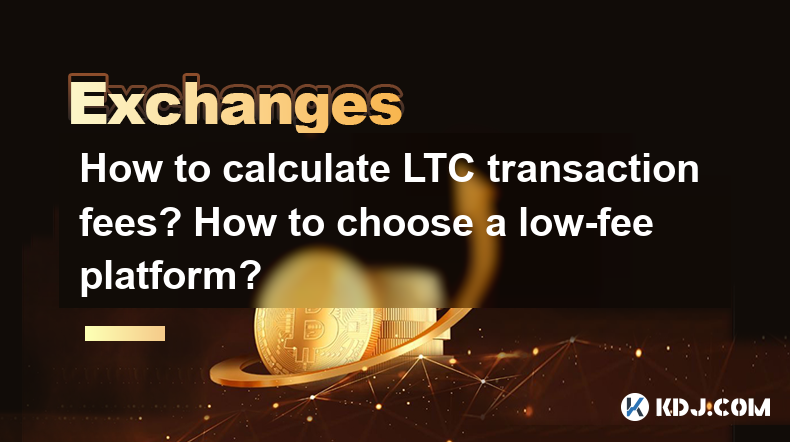
Litecoin (LTC) is a popular cryptocurrency known for its fast transaction speeds and lower fees compared to Bitcoin. Understanding how to calculate LTC transaction fees and choosing a low-fee platform is essential for optimizing your transactions. In this article, we'll dive into the details of how LTC transaction fees are calculated and guide you through the process of selecting a platform that offers low fees.
How LTC Transaction Fees Are Calculated
LTC transaction fees are determined by several factors, including the size of the transaction in bytes, the network congestion, and the priority you assign to the transaction. Here's a breakdown of how these elements influence the fee:
Transaction Size: The size of a transaction is measured in bytes and is influenced by the number of inputs and outputs in the transaction. The more complex the transaction, the larger its size, and consequently, the higher the fee.
Network Congestion: When the Litecoin network is congested, miners prioritize transactions with higher fees. If the network is less congested, you might be able to get away with a lower fee.
Priority: You can set the priority of your transaction by choosing a higher or lower fee. A higher fee will incentivize miners to process your transaction more quickly.
To calculate the fee, you can use the following formula:
[ \text{Fee} = \text{Transaction Size (bytes)} \times \text{Fee Rate (LTC per byte)} ]
The fee rate can vary based on network conditions. You can find the current recommended fee rates on various Litecoin block explorers or wallet applications.
How to Estimate LTC Transaction Fees
Estimating LTC transaction fees involves understanding the current network conditions and using tools provided by wallets or block explorers. Here's how you can do it:
Use a Litecoin Wallet: Most Litecoin wallets, such as Litecoin Core or mobile wallets like Trust Wallet, provide an estimate of the transaction fee based on the current network conditions. When you initiate a transaction, the wallet will suggest a fee.
Check a Block Explorer: Websites like BlockCypher or SoChain offer real-time data on Litecoin network congestion and recommended fee rates. You can use this information to manually calculate your fee.
Adjust the Fee: If you're not in a hurry, you can opt for a lower fee. Conversely, if you need your transaction to be processed quickly, you can increase the fee.
Choosing a Low-Fee Platform for LTC Transactions
Selecting a platform that offers low fees for LTC transactions can significantly reduce your costs. Here are some factors to consider when choosing a platform:
Fee Structure: Different platforms have different fee structures. Some charge a flat fee, while others use a percentage-based fee. Look for platforms that offer competitive rates.
Transaction Speed: Some platforms may offer lower fees but at the cost of slower transaction processing times. Consider your need for speed when choosing a platform.
Security and Reputation: Ensure that the platform you choose is reputable and secure. Low fees are great, but not if they come at the expense of your funds' safety.
User Experience: A user-friendly interface can make a big difference, especially if you're new to cryptocurrency transactions.
Top Platforms for Low-Fee LTC Transactions
Here are some platforms known for offering low fees for LTC transactions:
Binance: Binance is known for its competitive fees and fast transaction processing. The platform charges a flat fee for LTC withdrawals, which is often lower than many other exchanges.
Kraken: Kraken offers competitive fees and a user-friendly interface. The platform's fee structure is transparent, making it easy to calculate your costs.
Coinbase: While Coinbase is known for its ease of use, it also offers competitive fees for LTC transactions. The platform's fee calculator can help you estimate your costs.
Bitfinex: Bitfinex is another platform that offers low fees for LTC transactions. The platform's fee structure is based on your trading volume, which can result in lower fees for active traders.
How to Use a Low-Fee Platform for LTC Transactions
Using a low-fee platform for LTC transactions involves a few steps. Here's how you can do it:
Sign Up and Verify Your Account: Start by signing up for an account on the platform of your choice. You'll need to complete the verification process, which may involve providing personal information and identification.
Deposit LTC: Once your account is verified, you can deposit LTC into your wallet on the platform. This can usually be done by sending LTC from another wallet or exchange.
Initiate a Transaction: When you're ready to send LTC, navigate to the withdrawal or send section of the platform. Enter the recipient's LTC address and the amount you want to send.
Set the Fee: The platform will usually provide a recommended fee based on current network conditions. You can adjust this fee if you want to prioritize speed or save on costs.
Confirm and Send: Review the transaction details, including the fee, and confirm the transaction. The platform will then broadcast the transaction to the Litecoin network.
Frequently Asked Questions
Q: Can I change the transaction fee after sending LTC?
A: No, once you've sent a LTC transaction, the fee cannot be changed. It's important to set the fee correctly before confirming the transaction.
Q: How long does it take for a LTC transaction to be confirmed?
A: The confirmation time for LTC transactions can vary based on network congestion and the fee you set. On average, transactions are confirmed within 2.5 minutes, but this can be faster or slower depending on the conditions.
Q: Are there any risks associated with using low-fee platforms for LTC transactions?
A: While low-fee platforms can save you money, there are potential risks. Ensure that the platform you choose is reputable and secure to minimize the risk of losing your funds.
Q: Can I use a hardware wallet with low-fee platforms for LTC transactions?
A: Yes, many low-fee platforms support the use of hardware wallets for added security. You can connect your hardware wallet to the platform to initiate transactions securely.
Disclaimer:info@kdj.com
The information provided is not trading advice. kdj.com does not assume any responsibility for any investments made based on the information provided in this article. Cryptocurrencies are highly volatile and it is highly recommended that you invest with caution after thorough research!
If you believe that the content used on this website infringes your copyright, please contact us immediately (info@kdj.com) and we will delete it promptly.
- Crypto Trends 2025: MAGACOIN FINANCE Surges, Ethereum Mining Evolves, and XRP Payouts Innovate
- 2025-07-02 10:30:12
- Ethereum, MAGACOIN FINANCE, and Inflation: A Shift in Crypto Investor Focus
- 2025-07-02 10:30:12
- Kangaroos, Coin Purses, and a Hop Through Money History: You Gotta See This!
- 2025-07-02 10:50:15
- Arbitrum, Robinhood, and ARB Price: Is a Rebound on the Horizon?
- 2025-07-02 10:50:15
- Cryptos in 2025: Early Backers Cash In?
- 2025-07-02 10:55:17
- Lightchain AI: Bonus Round Buzz and Mainnet Activation on the Horizon
- 2025-07-02 11:10:12
Related knowledge
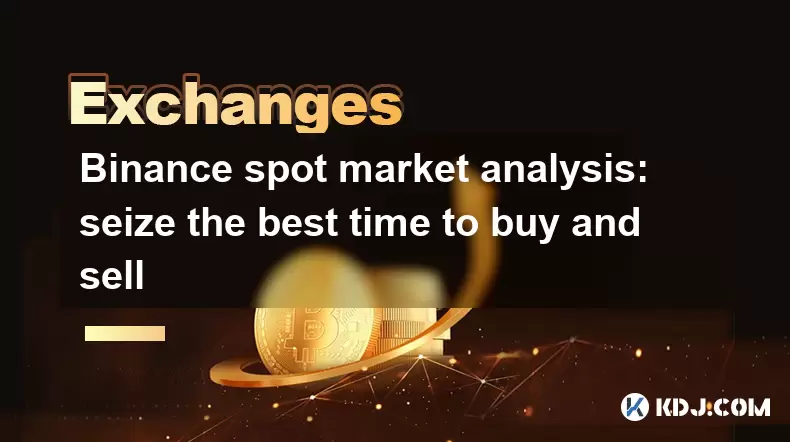
Binance spot market analysis: seize the best time to buy and sell
Jun 19,2025 at 04:56pm
Understanding the Binance Spot MarketThe Binance spot market is one of the most popular platforms for cryptocurrency trading globally. It allows users to trade digital assets at current market prices, making it essential for traders aiming to buy low and sell high. Unlike futures or margin trading, spot trading involves direct ownership of the asset aft...
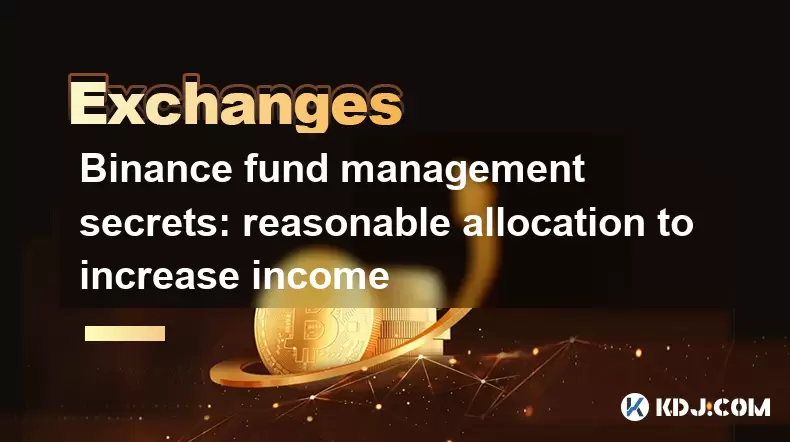
Binance fund management secrets: reasonable allocation to increase income
Jun 22,2025 at 02:29pm
Understanding Binance Fund ManagementBinance fund management involves strategic allocation of your cryptocurrency assets to optimize returns while managing risk. The key to successful fund management lies in understanding how different investment options on the Binance platform can be utilized to create a diversified portfolio. This includes spot tradin...

Binance trading pair selection skills: find the best buying and selling combination
Jun 23,2025 at 02:49am
Understanding the Basics of Trading Pairs on BinanceBefore diving into trading pair selection skills, it's essential to understand what a trading pair is. On Binance, a trading pair refers to two cryptocurrencies that can be traded against each other. For example, BTC/USDT means Bitcoin is being traded against Tether. Each trading pair has its own liqui...

Binance new coin mining strategy: participate in Launchpool to earn income
Jun 23,2025 at 11:56am
What is Binance Launchpool and how does it work?Binance Launchpool is a feature introduced by the world’s largest cryptocurrency exchange, Binance, to allow users to earn new tokens through staking. This platform enables users to stake their existing cryptocurrencies (such as BNB, BUSD, or other supported assets) in exchange for newly launched tokens. T...
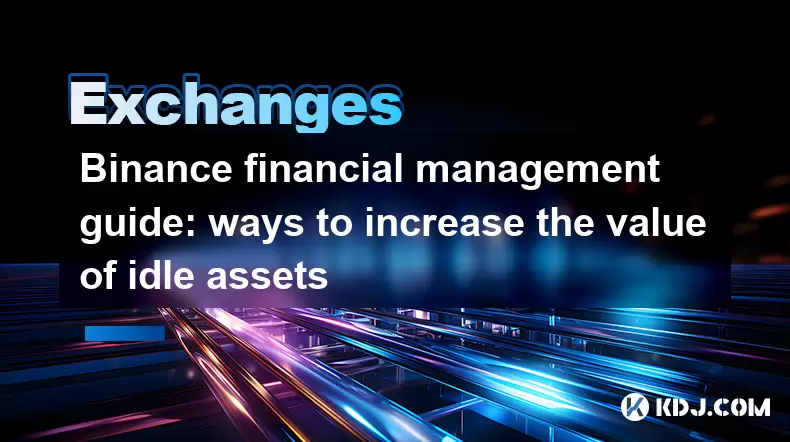
Binance financial management guide: ways to increase the value of idle assets
Jun 19,2025 at 11:22pm
Understanding Idle Assets in the Cryptocurrency SpaceIn the fast-paced world of cryptocurrency, idle assets refer to digital currencies that are not actively being used for trading, staking, or yield farming. Holding these funds in a wallet without utilizing them means missing out on potential growth opportunities. Binance, as one of the leading platfor...
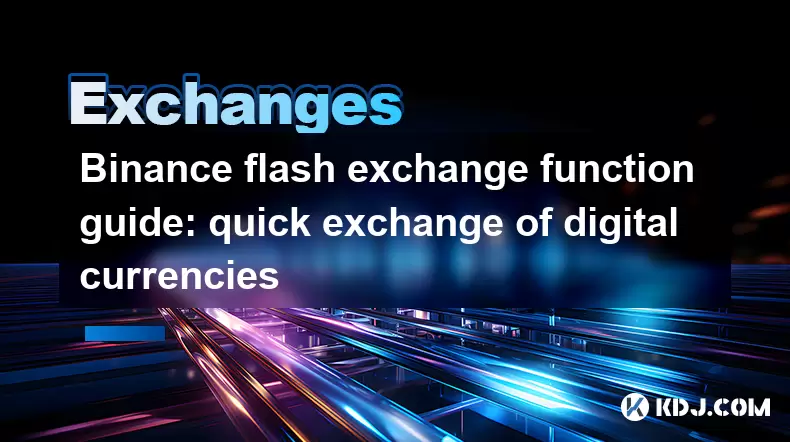
Binance flash exchange function guide: quick exchange of digital currencies
Jun 23,2025 at 12:29pm
What is the Binance Flash Exchange Function?The Binance Flash Exchange function is a powerful tool designed to allow users to instantly swap between supported cryptocurrencies without the need for placing traditional buy/sell orders. This feature simplifies the trading process by offering a direct exchange mechanism, eliminating the requirement to conve...

Binance spot market analysis: seize the best time to buy and sell
Jun 19,2025 at 04:56pm
Understanding the Binance Spot MarketThe Binance spot market is one of the most popular platforms for cryptocurrency trading globally. It allows users to trade digital assets at current market prices, making it essential for traders aiming to buy low and sell high. Unlike futures or margin trading, spot trading involves direct ownership of the asset aft...

Binance fund management secrets: reasonable allocation to increase income
Jun 22,2025 at 02:29pm
Understanding Binance Fund ManagementBinance fund management involves strategic allocation of your cryptocurrency assets to optimize returns while managing risk. The key to successful fund management lies in understanding how different investment options on the Binance platform can be utilized to create a diversified portfolio. This includes spot tradin...

Binance trading pair selection skills: find the best buying and selling combination
Jun 23,2025 at 02:49am
Understanding the Basics of Trading Pairs on BinanceBefore diving into trading pair selection skills, it's essential to understand what a trading pair is. On Binance, a trading pair refers to two cryptocurrencies that can be traded against each other. For example, BTC/USDT means Bitcoin is being traded against Tether. Each trading pair has its own liqui...

Binance new coin mining strategy: participate in Launchpool to earn income
Jun 23,2025 at 11:56am
What is Binance Launchpool and how does it work?Binance Launchpool is a feature introduced by the world’s largest cryptocurrency exchange, Binance, to allow users to earn new tokens through staking. This platform enables users to stake their existing cryptocurrencies (such as BNB, BUSD, or other supported assets) in exchange for newly launched tokens. T...

Binance financial management guide: ways to increase the value of idle assets
Jun 19,2025 at 11:22pm
Understanding Idle Assets in the Cryptocurrency SpaceIn the fast-paced world of cryptocurrency, idle assets refer to digital currencies that are not actively being used for trading, staking, or yield farming. Holding these funds in a wallet without utilizing them means missing out on potential growth opportunities. Binance, as one of the leading platfor...

Binance flash exchange function guide: quick exchange of digital currencies
Jun 23,2025 at 12:29pm
What is the Binance Flash Exchange Function?The Binance Flash Exchange function is a powerful tool designed to allow users to instantly swap between supported cryptocurrencies without the need for placing traditional buy/sell orders. This feature simplifies the trading process by offering a direct exchange mechanism, eliminating the requirement to conve...
See all articles

























































































